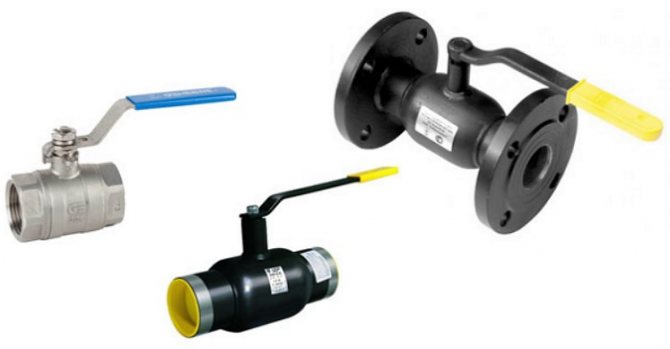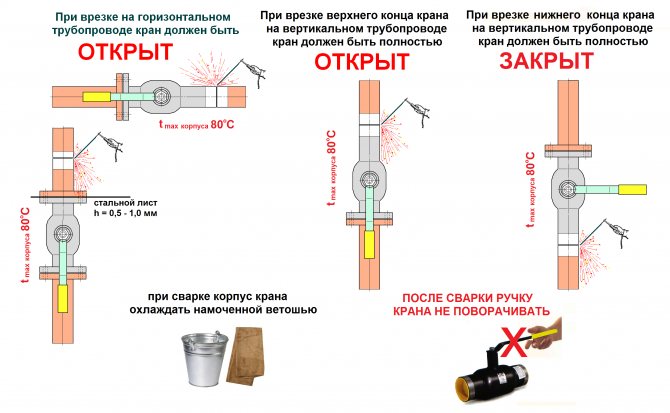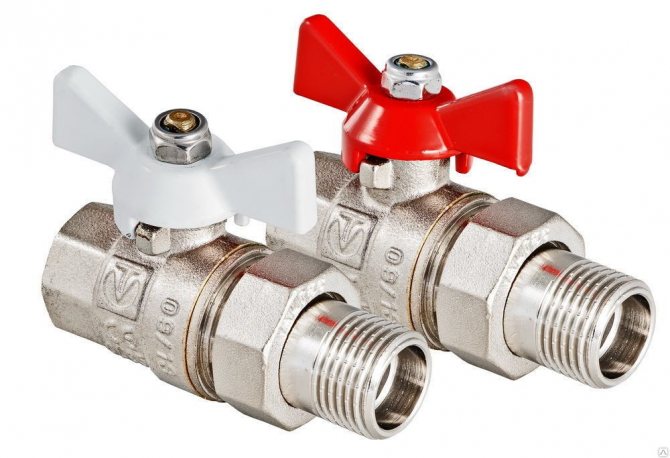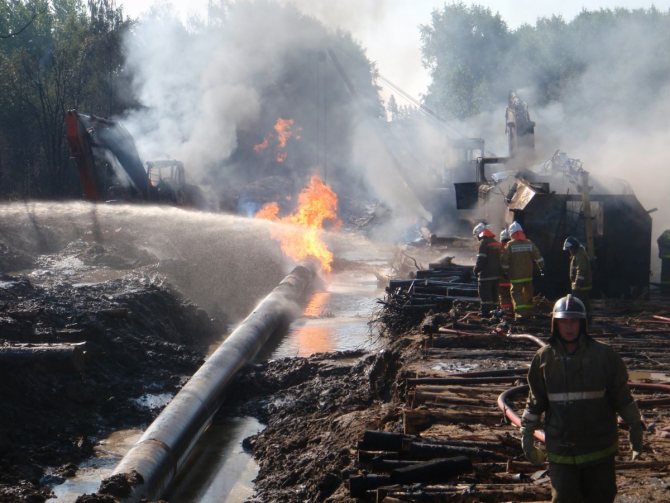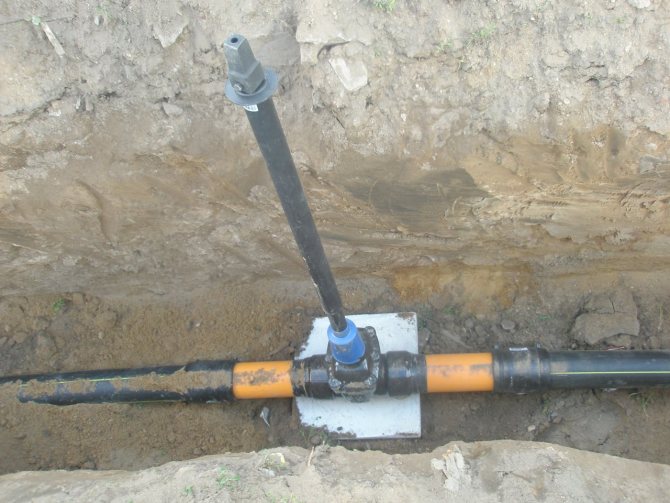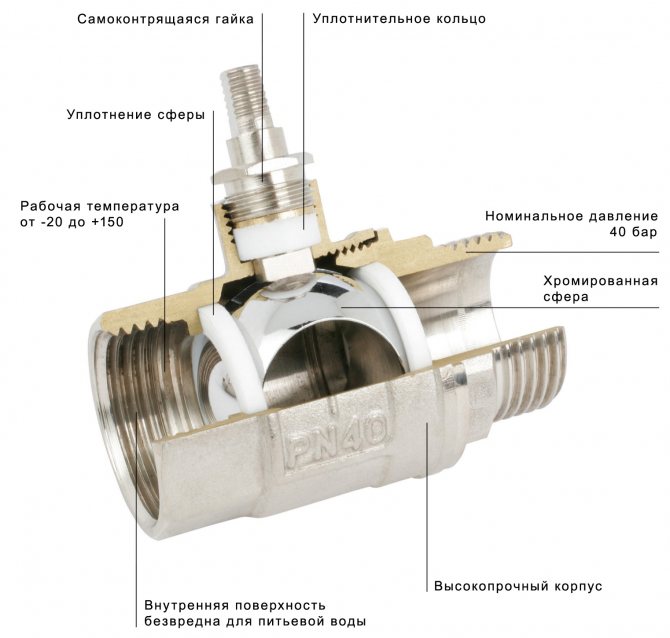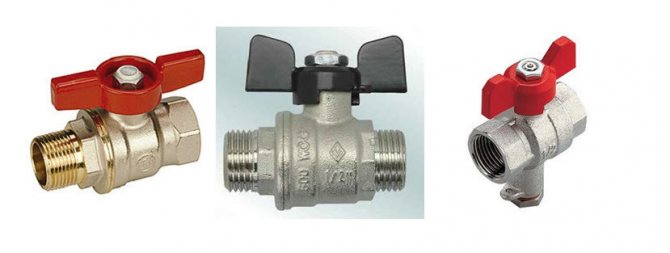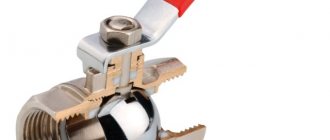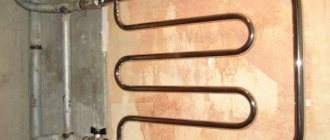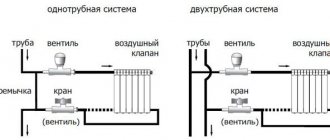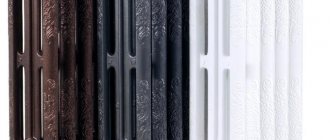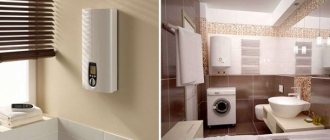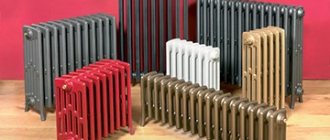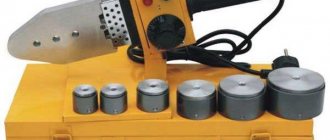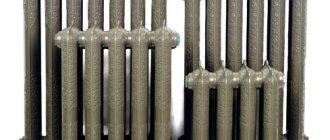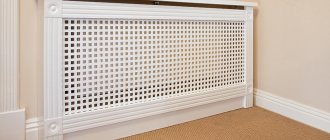Ball valve is a modern equipment related to shut-off valves. Thanks to the installation of a ball valve on the pipe, the client gets the opportunity, if necessary, to shut off the flow of the working medium (water, gas, etc.) in the radiators, risers and other elements of the communication system.
Read more about the installation of a ball valve, its pros and cons, as well as the prices for the service - below!
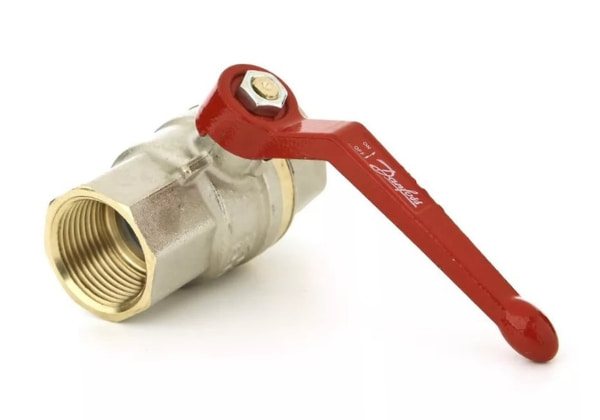
Coupling ball valve
Benefits of using ball valves
Ball valves are very practical and compact devices, and are irreplaceable when it comes to the aesthetic component. They are easy to use - a simple 90 degree rotation of the tap handle will allow you to shut off the working medium supply almost instantly. This is important in the event of minor accidents - leaks in water pipes and leaks in gas pipelines.
These valves are resistant to corrosion and wear resistant. Perfectly adapted to the effects of aggressive environments. In addition, the repair of ball valves is quite simple, and in comparison with other types of valves, their purchase is quite cheap.
Preparing to install the ball valve
In order for the installation of the ball valve to be easy and without any difficulties, it is necessary to properly prepare for it. It is very convenient in that it allows you to turn off the water immediately after such a need arises. For this, as a rule, a ball valve is used, which is installed on a common water pipe.
The installation of ball valves makes using the water supply system and carrying out various preventive and repair work easier and more convenient.
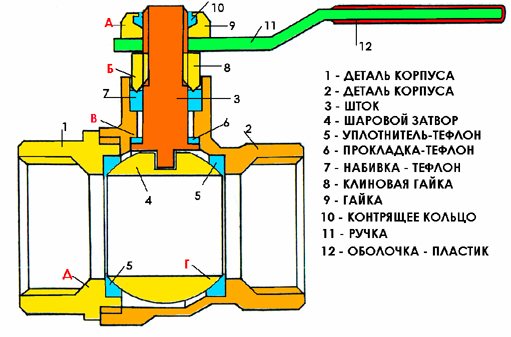

Ball valve device diagram.
In order to install a ball valve, it is necessary to shut off the water supply in the entire riser. In view of this, you need to worry in advance about obtaining permission to turn off the water supply from the relevant companies. You should prepare all the tools and materials that are necessary in order to properly install the ball valve on the riser with your own hands. The set of tools for installation is minimal:
- gas or adjustable wrench;
- fum tape (yellow or white tape for winding on threads).
Design features of ball valves
Although the installation of ball valves has been used for a long time, their widespread use began only with the advent of modern materials (fluoroplastic, artificial rubber and other synthetic substances) that can provide reliable sealing and practically avoid wear of working elements, which, in conjunction with high-quality lubricants, significantly reduce friction also makes it easier to operate even large ball valves.
The device of modern ball valves is quite simple and consists of the following elements.
Namely:
- shutter - a part in motion in the form of a metal ball with a through cylindrical hole in the center to ensure the passage of the transported medium;
- hulls;
- seal rod;
- control knobs;
- body nut;
- Teflon sealing seats;
- rubber stem seal;
- adjusting nut;
- sealing washer.
The opening in the valve is equal to the inside diameter of the connected pipe, which is why these valves are called full bore. When the valve is fully opened, there are practically no hydraulic losses in the flow circulation when passing through the valve and the valve as a whole, which reduces the wear of pipes and the locking mechanism several times in comparison with previous types of locking devices.By turning the valve handle 90 degrees, the work flow will be completely shut off.
Fitting the mixer to the sink
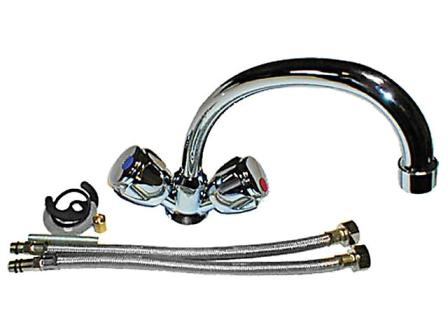

Let's get down to the practical part.
Now let's talk about how to install a faucet in the kitchen.
For convenience, we have compiled step-by-step instructions:
- We turn off the water supply, take the mixer out of the box, read the manufacturer's instructions and attach the gander to the body... On the reverse side, we screw the flexible hoses into the corresponding holes;
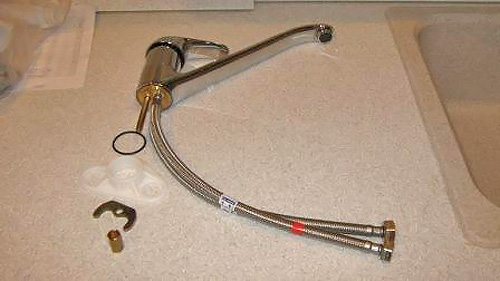

We assemble the device and connect flexible hoses.
- We put a rubber O-ring on the hoses and insert it into the groove on the base of the mixer, where it will adhere to the sink;
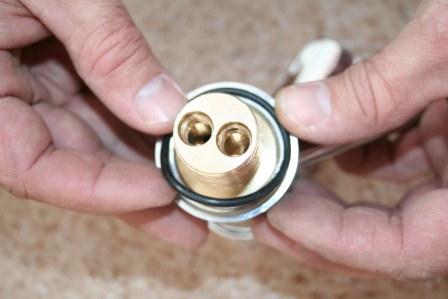

Insert the O-ring.
- We stretch the hoses into the hole in the sink body and put the tap in the installation position, closing the hole in the sink with its base... We take a threaded pin (there can be 2 of them) and screw it into the hole on the base of the mixer;
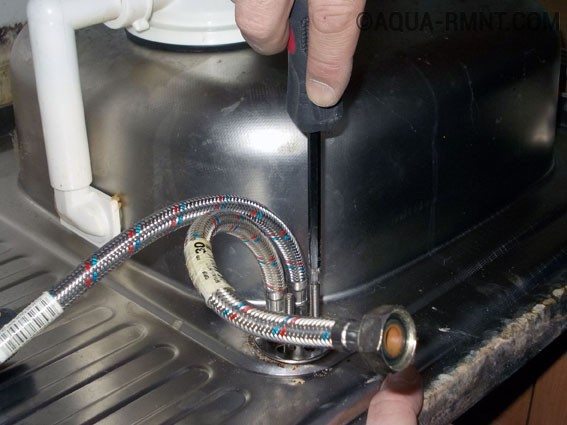

We screw in the fixing pin.
- Install the gasket, then take the mounting bracket, put it on the pin and tighten with a nut... It should be tightened so that the tap is firmly held on the sink and does not stagger, but you should not overtighten either;
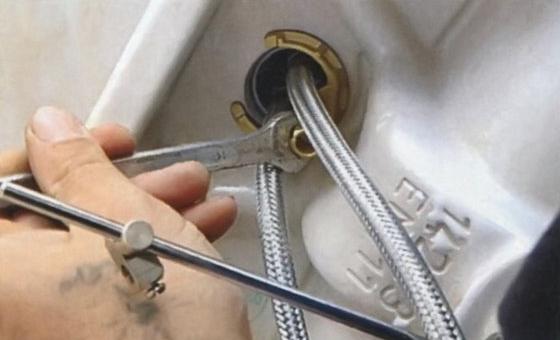

We tighten the bracket with a nut.
- If the sink is not installed, we install it... Then we wind the FUM tape on the couplings of the water pipes and wind the ends of the flexible hoses. Tighten with an adjustable wrench.
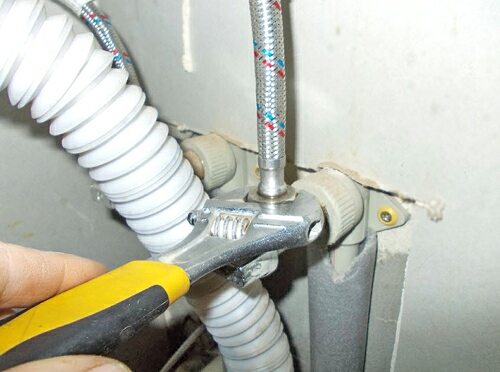

We connect water pipes.
- We connect the sewer, turn on the water supply and check the operation of the tap.
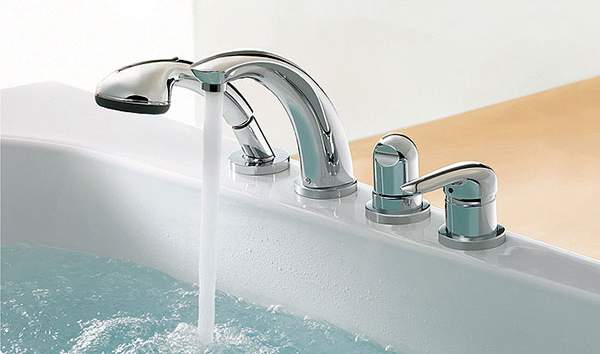

We check the operation of the device.
Important! Do not mix up the hot and cold water hoses when installing. They must be connected in accordance with the markings on the thumbs of the device.
How to choose a ball valve
Ball valve for underground installation
If it is necessary to repair the valve or replace it, you should first determine the most suitable type of valve for a particular case.
So, the main types of ball valves are as follows:
- full bore - with a throughput of 90-100%;
- partial bore - with a throughput of 40-50%;
- standard - with a flow capacity of 70-80%.
With regard to the materials used in the manufacture of ball valves, durable plastic, brass and alloys with its content are most often used here.
Brass ball valves are highly durable, do not rust and perfectly withstand significant temperature changes.
Plastic ball valves are slightly less durable and do not tolerate high temperatures. For this reason, they are best used as shut-off devices for gas and cold water pipelines.
For heating and hot water pipelines, the best option would be to install a ball valve made of brass.
When choosing a ball valve, among other things, it is necessary to determine what its purpose will be and how it is supposed to be fastened.
There are the following main types of ball valve mountings:
- coupling ball valves;
- flanged ball valves;
- welded ball valves;
- combined ball valves.
Consider the features and scope of each type of cranes.
What you need to know before installation
A set of tools and consumables
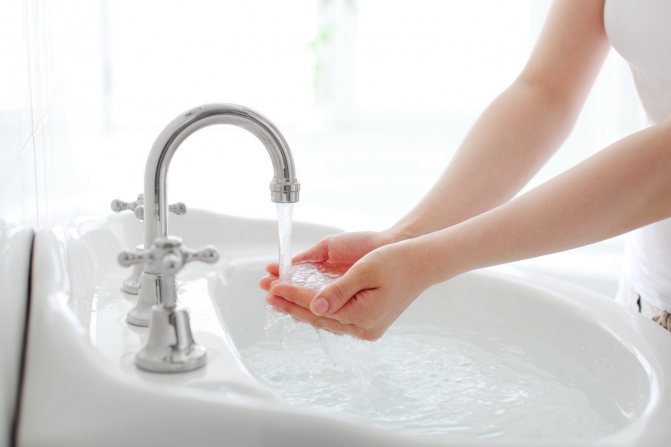

For high-quality crane operation, you should choose the right set of consumables.
Before proceeding with the installation of the mixer, it is necessary to resolve the issue of the availability of all the necessary tools and consumables. To work, you need a small set of them, however, you also need to provide it.
Some faucet kits are equipped with flexible water supply hoses, but they are not always of satisfactory quality and the required length. The most unsuccessful are products made from silumin.
To determine its presence, it is enough to clamp the hose in your fist and stretch it through your palm with some effort: if a gray mark remains on the skin, it means that this is a silumin hose - it is better to replace it with a better one.
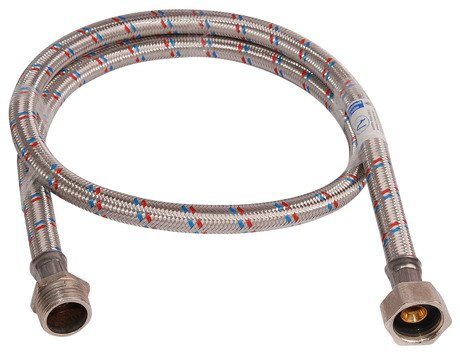

Use good quality hoses of sufficient length.
Important! It is better to measure the distance from the mixer to the water pipes in advance. The length of the flexible hoses should be slightly longer than this distance so that they can freely reach the pipes and be mounted without tension.
In addition to the hoses, we need a sealing tape FUM or tow. This is necessary to seal the threaded connections when connecting hoses to pipes in order to avoid leaks.
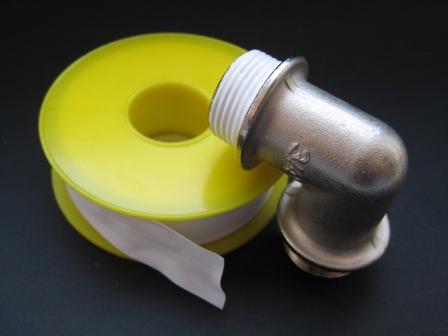

In the photo - FUM sealing tape.
Installing a ball valve with your own hands will require such a tool:
- Adjustable water wrench. Can be replaced with a set of keys of different calibers. If the installation will be carried out on a sink mounted in the countertop, then it is more convenient to use spanner or tubular keys, if the sink has not yet been installed, you can do with open-end keys;
- For some models of mixers, you may need a hexagon and a screwdriver, in addition, it is convenient to use a screwdriver to perform some procedures, for example, to lay the gaskets in the corresponding grooves;
- Pliers, a file, a hammer and other standard tools will also not be a hindrance, but most likely will help you with your work.
Important! To seal tow, it is better to use a special plumbing paste, especially since its price is cheap. Do not apply oil paint to the connection, as later there will be problems when replacing or repairing the crane.
Types of mixers
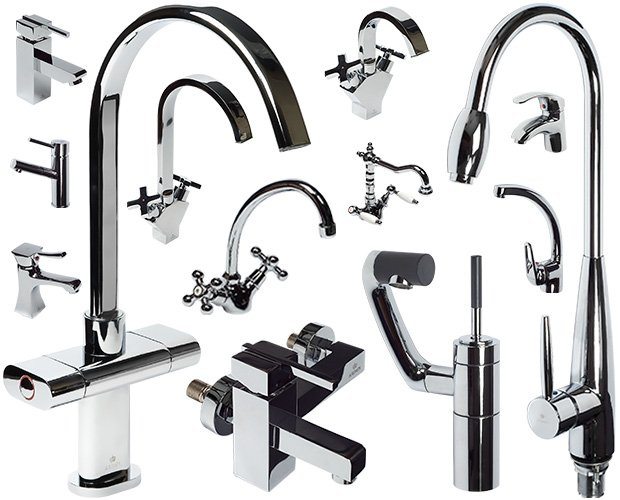

The modern plumbing market offers a huge selection of faucet and mixer models.
When choosing a mixer, you should know what the main types of these devices exist and what are their differences.
Three main groups can be distinguished:
- Valves with worm locking mechanisms and rubber seals;
- Cranes with ceramic axle-boxes;
- Single-lever valves with ceramic cartridge.
The first are the most traditional and familiar models for the older generation, in which the valve is locked with a thread.
The main difference is that for locking, it is necessary to make several turns of the flywheel. These products are best suited for poor quality water, but they are often noisy and leaky.
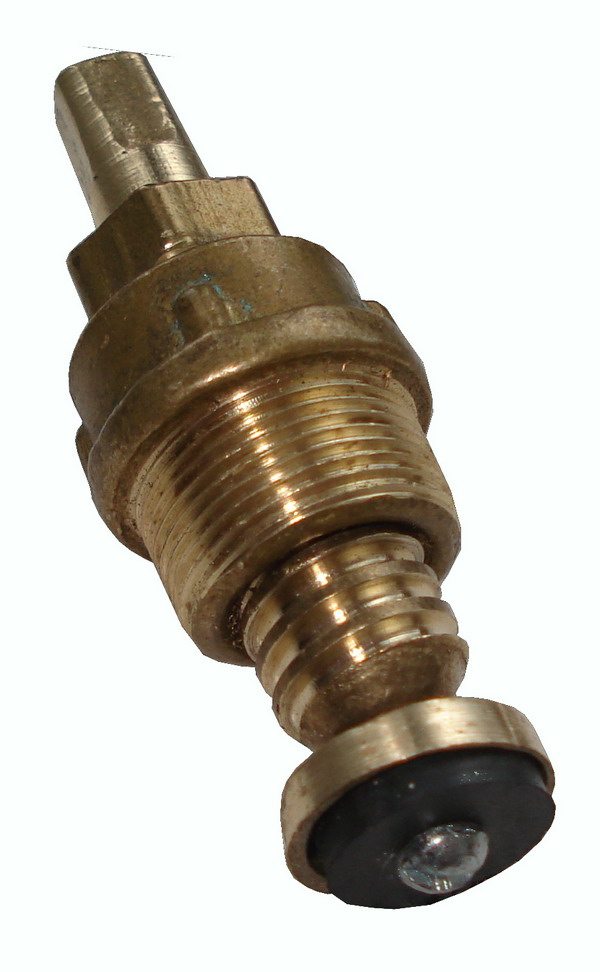

The rubber head of a worm-gear valve wears out quickly and starts to whistle.
Models with ceramic cranes are distinguished by half-turn flywheel travel, they are more reliable and convenient. At the same time, this class of plumbing is more demanding on the quality of water, therefore, for their operation, a filter is needed at the entrance to the apartment.
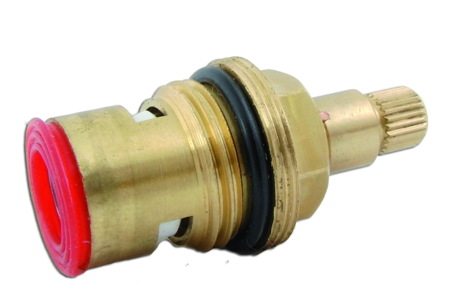

Ceramic faucet box.
Single-lever mixers are of the highest quality and most durable. They are easy to use, completely silent and reliable enough. The only problem that may arise is the discrepancy between the water supply pressure and the manufacturer's design requirements.
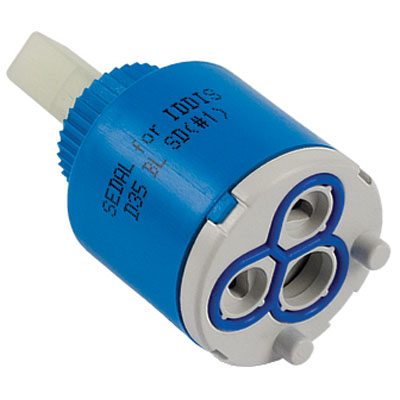

Lever mixer cartridge.
Important! Although the estimate for installing a ball valve is small, it is still better to do the work yourself, so you will be sure of the quality of the installation and in case of a breakdown you can quickly determine the way to fix it.
Features and areas of application of ball coupling valves
Ball valves are most often used for the equipment of gas, water supply and heating systems of residential buildings and public buildings.For example, the installation of taps on heating batteries is recommended with the use of coupling valves.
Such cranes have the following advantages:
- they are practical;
- convenient to use;
- have small dimensions;
- they are easy to install and dismantle without the use of special equipment.
It is advisable to use a coupling ball valve for installation on pipes with a diametrical section that does not exceed 40-45 mm. For larger pipes, it is better to install flanged ball valves.
Useful tips for purchasing a quality ball valve
When choosing cranes with ball mechanisms, regardless of the materials from which they are made, we recommend using the following algorithm:
- A crane installed in a water supply or heating system must have technical parameters corresponding to the designed or built system. The key characteristics are the internal section of the valve and the maximum allowable pressure for which the device is designed.
- The choice of a well-known manufacturer makes some sense. However, technical control departments of even large brands can tolerate defects, so it is best to inquire about the quality of a particular brand from people who are faced with the repair of valves every day: plumbers and plumbers.

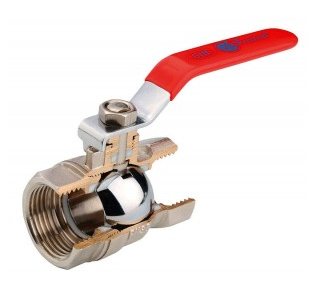
Internal design of a ball shut-off valve
- When purchasing a crane, carefully evaluate its appearance. There must be no surface irregularities, visible cracks, metal sagging, any visible structural imperfections on the valve body. The thickness of the outer walls of the device must be visually even and the same throughout the entire structure.
- The easiest way to distinguish the material from which the ball valve is made (steel from copper alloy) is by means of an ordinary household magnet: the magnet does not "stick" to brass.
Polypropylene pipelines and valves
Using flanged ball valves
The flanged ball valve is generally used for installations in pipelines over 50 mm in diameter. The use of gaskets during installation allows to ensure the strength and high hermetic properties of the pipe connection with the ball valve. Flanged ball valves are designed for significant loads, as they are characterized by a high degree of strength.
Flanged ball valves are classified as follows:
- collapsible - the body of which consists of 2 parts and can be easily disassembled to replace worn or damaged parts (locking element, gaskets, etc.);
- non-separable - having a cast body; in case of failure, a complete replacement of the ball valve is required.
Advice! Union ball valves are widely used in food, chemical and other industries. The advantage of such ball valves is due to the possibility of their multiple dismantling, which is very convenient in operation.
General principles for the construction of a water supply system
Of course, the construction of plumbing systems is a matter that is best undertaken by professionals. No wonder in any construction university there is a faculty, which is called "Water supply and sewerage". But at the same time, with the minimum necessary knowledge, you can easily create an internal sewer system and supply it with all the necessary devices yourself. In addition, knowledge in the field of design and construction of a water supply system will help you not to make mistakes when controlling work performed by third-party organizations or craftsmen.
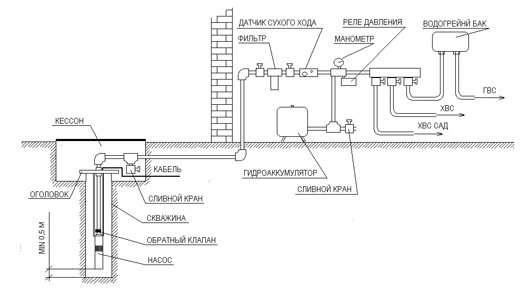

Plumbing scheme in a private house
So, in order to build a water supply system with your own hands, you need to carry out work in the following stages.
We draw up a diagram and plan of the future water supply system
The initial stage of any construction work is drawing up a plan.
You may be interested in the information-the design of the ball valve
The best option would be to draw up a plan for engineering communications either in a specialized computer program or on a regular sheet of graph paper. As a rule, water supply communications pass along the walls of the room, and in some cases they are laid in grooves - niches hollowed out in the wall.
Plumbing plan on a sheet of paper is not very accurate.
At this stage, you will be able to calculate the required number of water supply pipes and related fittings.
An important role in planning the water supply system is played by the calculation of the required number of valves. As a rule, modern water pipes are built from metal-plastic pipes. They are lightweight and easy to install. On such pipes, it is recommended to install classic shut-off ball valves made of brass or their alloys. Such a material of manufacture is absolutely neutral and does not enter into chemical reactions with flowing water. As a result, the water does not receive additional impurities, and the brass of the ball valves does not oxidize when the liquid passes.
Ball valve device
Shut-off and distribution water supply valves based on balls were invented about a century ago and during this time they have become very widespread. Such devices can currently be used both in industrial enterprises and in private households.
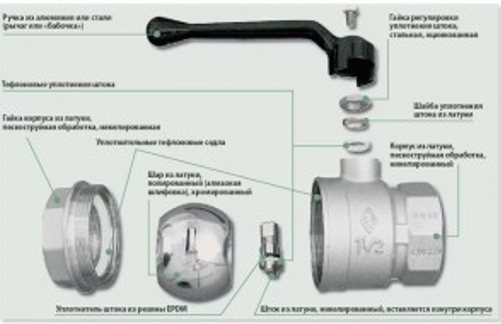

Ball valve components
The main field of application of ball valves is the complete shut-off of the water supply system. Therefore, they are installed at offsets from main water supply canals or in places where temporary dismantling of hydraulic devices is possible.
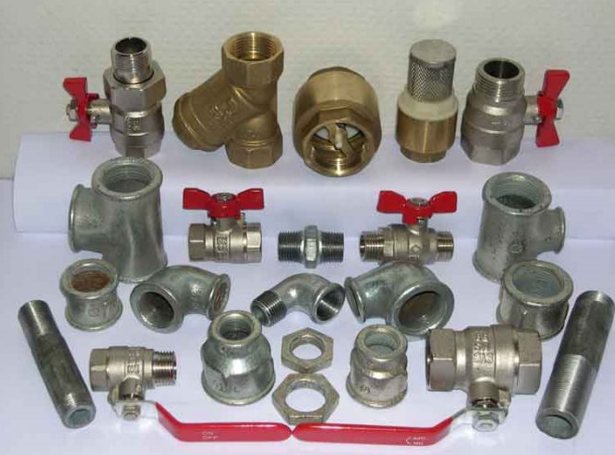

Plumbing fittings
The most obvious locations for ball valves are:
- the place of connection of the flexible toilet bowl in the bathroom;
- the place of connection of the outlet to the dishwasher or to the washing machine;
- the place of connection of the heating boiler;
- also, shut-off valves with ball valves can be installed on the heating system at the connection points of the "bypass" - a bypass path that is installed next to the water pump;
- in addition, ball valves are also installed in conventional water taps, which are located on sinks and bathrooms.
The device of the water valve with a ball mechanism
The ball valve for water intake is designed with a body and a rotatable distribution element. The design of the spout of the faucet (its body) usually differs significantly depending on the preferences of the manufacturer, but the ball element is the same for all modifications.
In such taps, the distributing element has a cavity inside, at the opposite ends of the hollow ball there are holes: two on one side and one on the other. Hot and cold water flows through two holes, flows mix in the ball cavity and water of the desired temperature is supplied to the spout.
A hollow ball is also used in shut-off valves, only on both sides it has one hole. The cross-section of the holes in the ball is usually equal to the internal cross-section of the pipeline, therefore such valves are called full bore. In the normal, open position of the tap, the hole in the ball leaves the water passage completely open, and when the ball is turned 90 degrees, the water flow is completely blocked.
Why are ball valves widespread?
Ball valves and ball valves have become very popular due to a combination of several factors:
- long term of trouble-free operation;
- excellent tightness - the outer part of the valve body is a single whole;
- attractive appearance;
- ease of installation - it is enough to fix only the inlet and outlet pipes on the thread.
Attention! Despite all the visible advantages of ball valves, they are not recommended to be installed on pipeline systems, in the flow of which there is a large amount of debris or impurities. The ball device fits quite tightly to the PTFE pads inside the body and damage to their articulation can cause inadequate operation of the device.
What are ball valves made of?
Steel ball valve
All ball valves produced by modern industry can be divided into three large groups according to the materials of their manufacture:
- steel - most often carbon steel with alloying additions is used, resistant to corrosion;
- copper-based alloys, in particular brass. The use of such alloys on copper pipelines prevents the appearance of electrochemical corrosion;
- plastic materials - the wide development of polymers has led to the fact that in their qualities they began to closely approach metals.
Shut-off valves made of plastic
For the manufacture of valves from polymeric materials, polyethylene or polypropylene is used. Such a material is absolutely immune to corrosion, both chemical and electrochemical. Such cranes are usually installed on systems designed to move corrosive liquids.
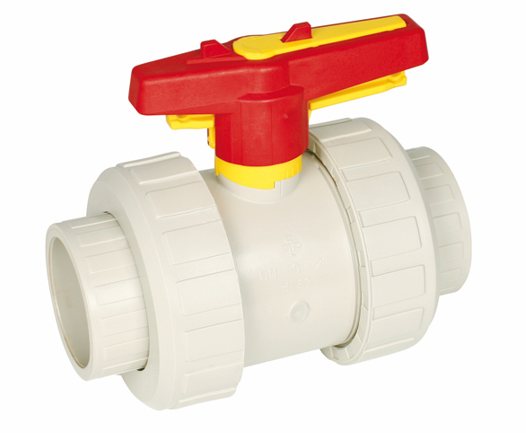

Shut-off valve made of plastic
A significant disadvantage of plastic as a material for the manufacture of valves is the impossibility of using it in hot water supply and heating systems - hot water has a destructive effect on plastic.
Shut-off valves made of steel
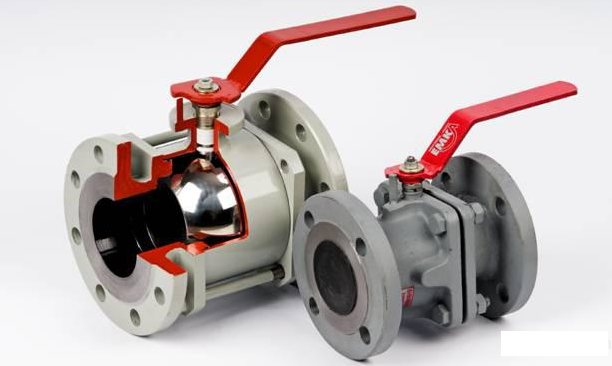

Shut-off steel ball valves
Ball valves are used in industrial pipelines. They are widely used when transporting liquids heated to high temperatures and even steam. Also, the use of steel ball valves is allowed in pipelines where the liquid moves under pressure.
Brass ball valves
The most common ball valves for domestic use are made of brass, a copper-based alloy. There are two main methods of making brass ball valves: they are molded into molds or forged using mechanical presses. Forged crane bodies are considered more durable and reliable. The reason for this: with this technology, no air cavities are formed in the alloy mass.
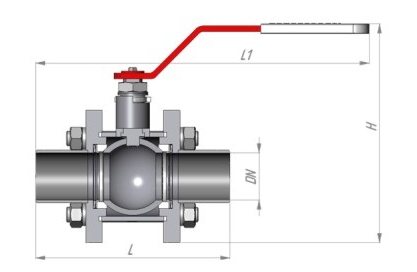

Brass Ball Valve
The composition of the brass alloy includes substances with different electrochemical potentials. Therefore, to prevent chemical corrosion, products are electroplated by applying a thin protective layer to them.
Attention! The use of ball valves with a working mechanism based on brass is not allowed in pipelines where the temperature of the working environment should not exceed 150 degrees. Too hot liquid forms tiny cavities in brass, which leads to a significant increase in its brittleness.
Brass ball valve prices
ball valve brass -Neptun
Welded ball valves
Welded ball valve
Welded ball valves, in contrast to coupling, choke and flanged valves, the installation of which is desirable in places that provide the possibility of quick dismantling and, if necessary, repair, are considered preferable in closed places where dismantling is not provided at all.
Welded ball valves are welded and must be installed by professionals only. Most often, welded ball valves can be found in the construction of building structures.
Application of combined ball valves
A number of manufacturers are engaged in the production of a specialized type of ball valves - combined.Combined ball valves combine several methods of installation to pipes at the same time.
By the number of nozzles, combined cranes are classified as follows:
- checkpoints;
- corner;
- three- and multi-way ball valves.
The latter type of combined cranes is applicable when it is necessary to redirect or mix working media.

